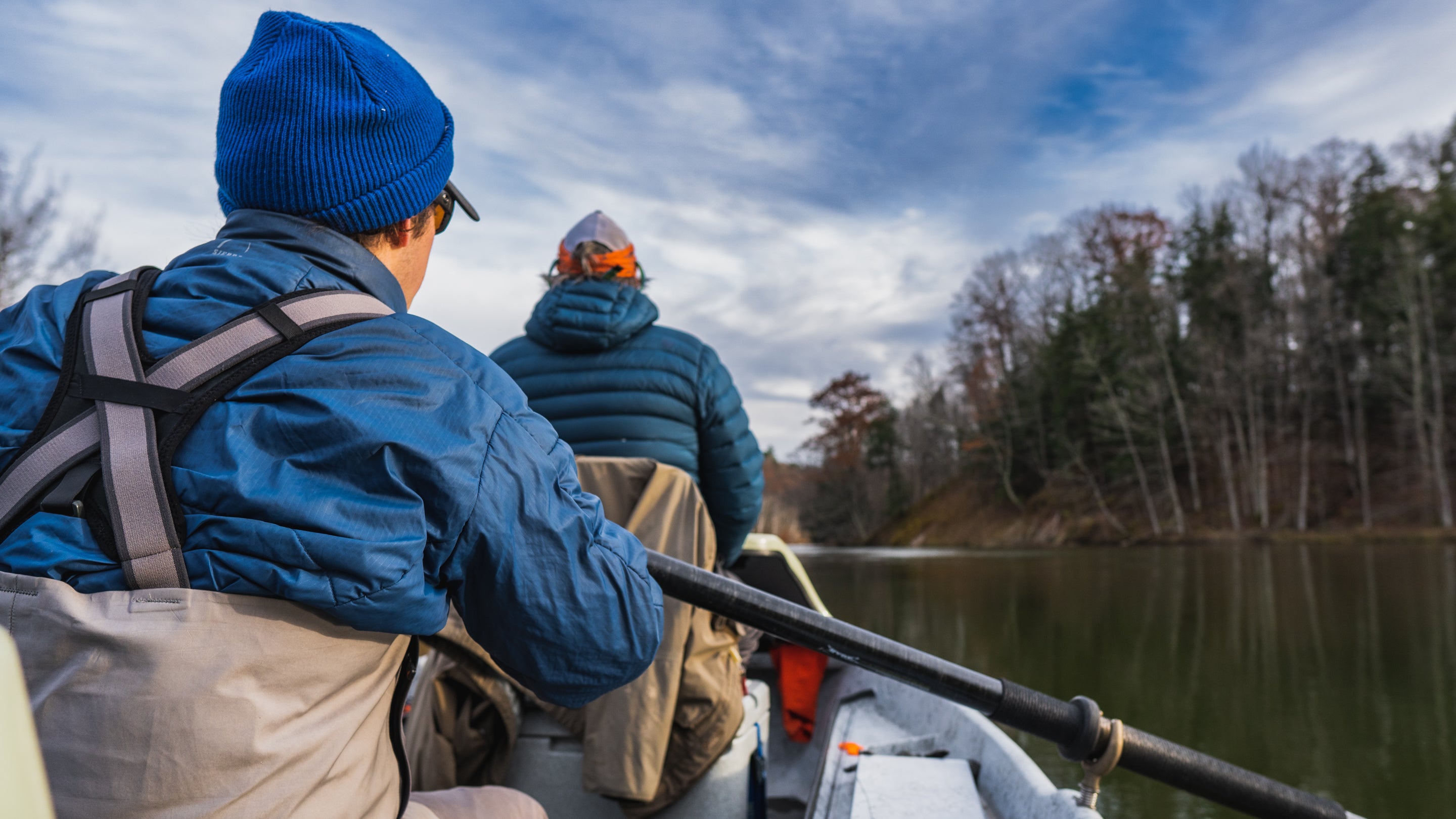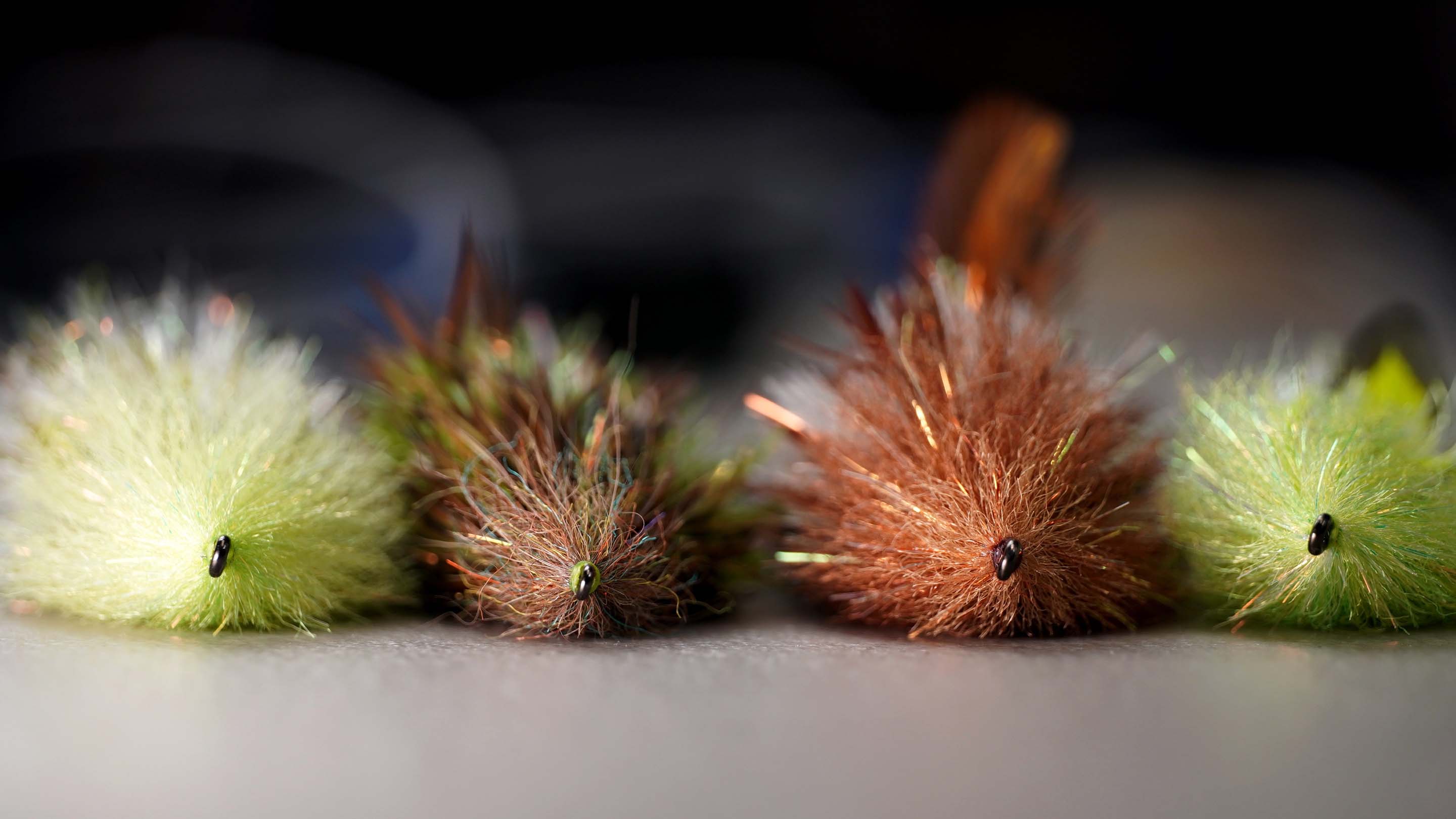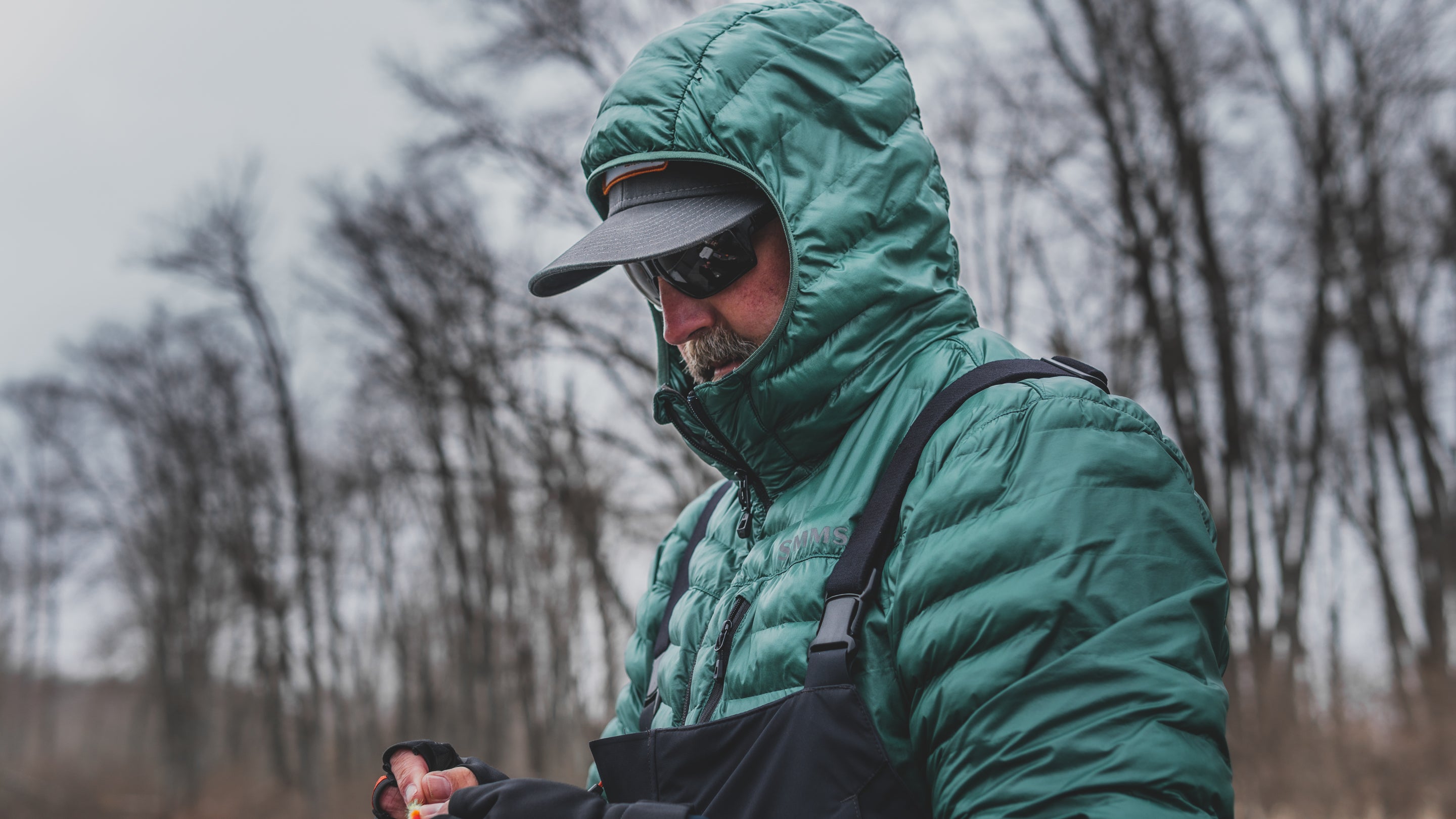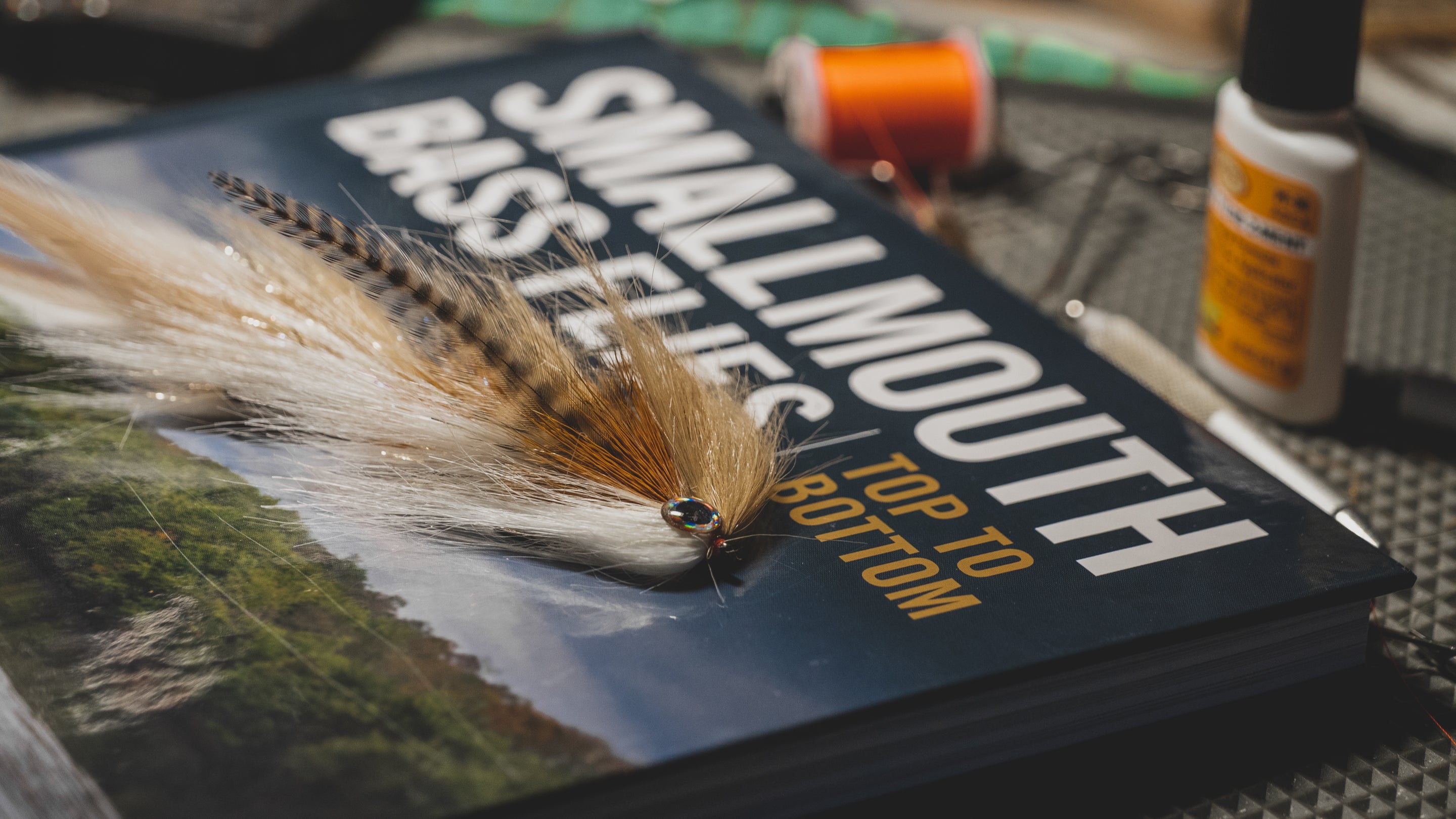Layering For Winter Warmth
Things are starting to cool down in Northern Michigan and if you are planning on getting out to enjoy to the fantastic fishing we have you need to think about staying warm on the water. Layering systems are a dynamic, flexible way to stay warm and dry through whatever Northern Michigan throws at us.
Before we look at specifics, lets take a look at each what job each piece will perform in the system.
BASE LAYER
The base layer is worn next to the skin where it can manage moisture and perspiration from the body. Anglers seem to skip this piece more than any other despite it being the true foundation of a good system. Moisture that is not drawn (wicked) away can lead to bodies losing heat and eventually becoming hypothermic.
When choosing a base layer, the options can sometimes be overwhelming, lets break down the two big variables so you can make a better decision based on your individual needs.
Materials
Synthetics such as polypropylene have historically dominated the market but natural materials such as merino wool have begun to emerge as a preference for many consumers. Synthetic base layers are typically more affordable but will need to be washed more often unless you don't mind the smell they tend to hold. Wool, despite it's cost, tends to be extremely comfortable and manages moisture and smell causing bacteria very well.
Weights
No matter the material, base layers are offered in different weights for different conditions. Some companies prefer a simple "light, medium, and heavy" weight designation while some will use terms such as "expedition" to describe their products. It's important to note that while a heavier base layer will provide some additional warmth, the primary goal should remain moisture management.
MID (INSULATION) LAYER
Whereas your baselayer will manage moisture, your mid layer will be your insulating layer. Unless conditions are extreme, this is where my personal layering systems fluctuate the most. My baselayers go with me everywhere, even in July and August when Northern Michigan gets warm and occasionally hot. Mid layers come into my system starting in October when the winds shift to the North and waters begin to cool.
Just like baselayers, you will have a range of materials and weights to choose from. It's important to know that the thicker an insulating layer is, the more efficient it typically is at trapping heat produced by your body. This is where it is really important to know yourself and how easily you get cold, knowing yourself will always help your make the best decisions when putting together a layering system.
Fleece
You probably own some fleece pants and if not, you should. Fleece is a tremendously useful material in wet environments as it will absorb the least amount of moisture and still functions well when fully saturated. Polyester fleece is affordable and easily attainable, it breathes well too so you're less likely to overheat. This is the insulating layer I like to use in the shoulder months especially if I'm moving around and do not want to overheat.
Down
If you want the most efficient material in terms of warmth to weight ratio, down is for you. It is light, warm, and very comfortable. Despite down having so many wonderful qualities, it does have a drawback that has kept many anglers from even considering it. When wet it loses its insulating properties. Let me encourage you however to not be afraid of down; I love my down jackets. All down jackets are made with a shell material that will provide some moisture protection and you'll likely be wearing a shell jacket as well. On the coldest days, I grab my down jacket and don't think twice about it.
Synthetic
For years and years the outdoor industries have sought to mimic the efficient insulating properties of down. They may not be quite as efficient but they have been able to address the major drawback of down. I am not going to tell you that you will be warm if you're wearing a soaking wet synthetic jacket. What happens to synthetic insulation when it is wet is different that down however, it retains loft. Loft is what allows these materials to trap heat produced by our bodies. So in the months where our Northern Michigan weather can turn from sun to rain to snow, I wear a synthetic insulated jacket with confidence.
OUTER (SHELL) LAYER
Where your layering system meets the outer elements, an outer shell needs to stand up to precipitation such as rain and snow and block cold wind that can steal your heat away. Too often I see folks on the river without a shell knowing they are missing a piece of the puzzle and losing heath their bodies are producing. These outer shells come in many forms and slight variations.
Waterproof/Breathable
A lot changed in the outdoor industry when the first waterproof-breathable membranes were developed. We've already talked about the issue of moisture management when we covered base layers so you should already understand why it is so important. Anyone who has worn the old rain slickers that do not breathe will understand perfectly. These shells are in our opinion the most functional across a wide variety of activities and conditions. Whether it's a brief shower in June, a cold soaker in October, or a snow storm in December, these jackets will help keep you dry and warm.
I will also point out that within this category, all shells are not created equal. Some affordable options will have a polyurethane coating applied instead of a membrane sandwiched between an inner liner and durable outer fabric. Some shells will have only a single layer and others several layer of fabric that will help the garment last for years in the toughest conditions.
Soft Shells
These garments can be confusing for some consumers as they combine elements together to produce a jacket focused on comfort and breathability. Often these are not a completely waterproof shell but will stand up in a lighter rain with a DWR coating. I tend to wear a soft shell in the fall months on days without rain in the forecast. They are not constricting and extremely comfortable in windy conditions.
PUTTING IT ALL TOGETHER
Now that you are familiar with the function each piece serves, we can talk briefly about putting a system together for winter warmth. The biggest tool you have in your box is experience; knowing yourself and how your body functions in difficult conditions is vital to putting a system together. What works for me might be completely different that what you need. That being said, lets look at some of my layering systems for different conditions.
- Base Layer: Simms Waderwick Core Top and Bottom
- Mid Layer: Simms Midlayer Fleece Top and Bottom
- Mid Layer: Simms Midstream Insulated Vest
- Shell Layer: Simms Challenger Bibs
- Shell Layer: Simms Challneger Windbloc Hooded Jacket
- Base Layer: Simms Waderwick Core Top and Bottom
- Mid Layer: Simms Cold Weather Pant and Shirt
- Mid Layer: Simms Midstream Insulated Vest
- Shell Layer: Simms G3 Guide Waders
- Shell Layer: SImms Guide Wading Jacket
- Base Layer: Simms Waderwick Core Top and Bottom
- Mid Layer: Simms Midlayer Fleece Bib
- Mid Layer: Simms Midlayer Fleece Top
- Mid Layer: Simms Midstream Insulated Pant
- Mid Layer: Simms Midstream Insulated Vest
- Shell Layer: Simms G3 Guide Bootfoot Waders
- Shell Layer: Simms Bulkley Jacket



